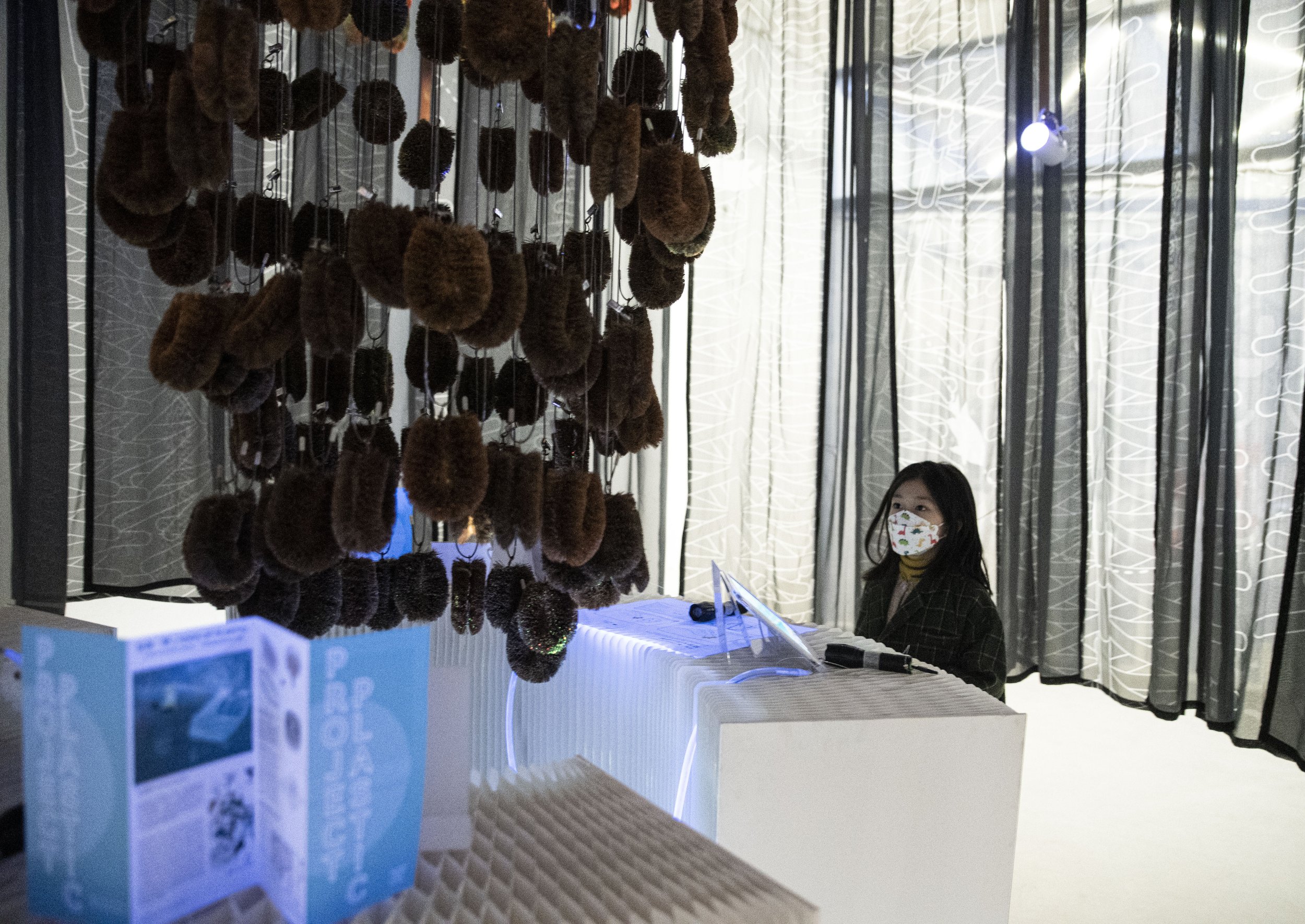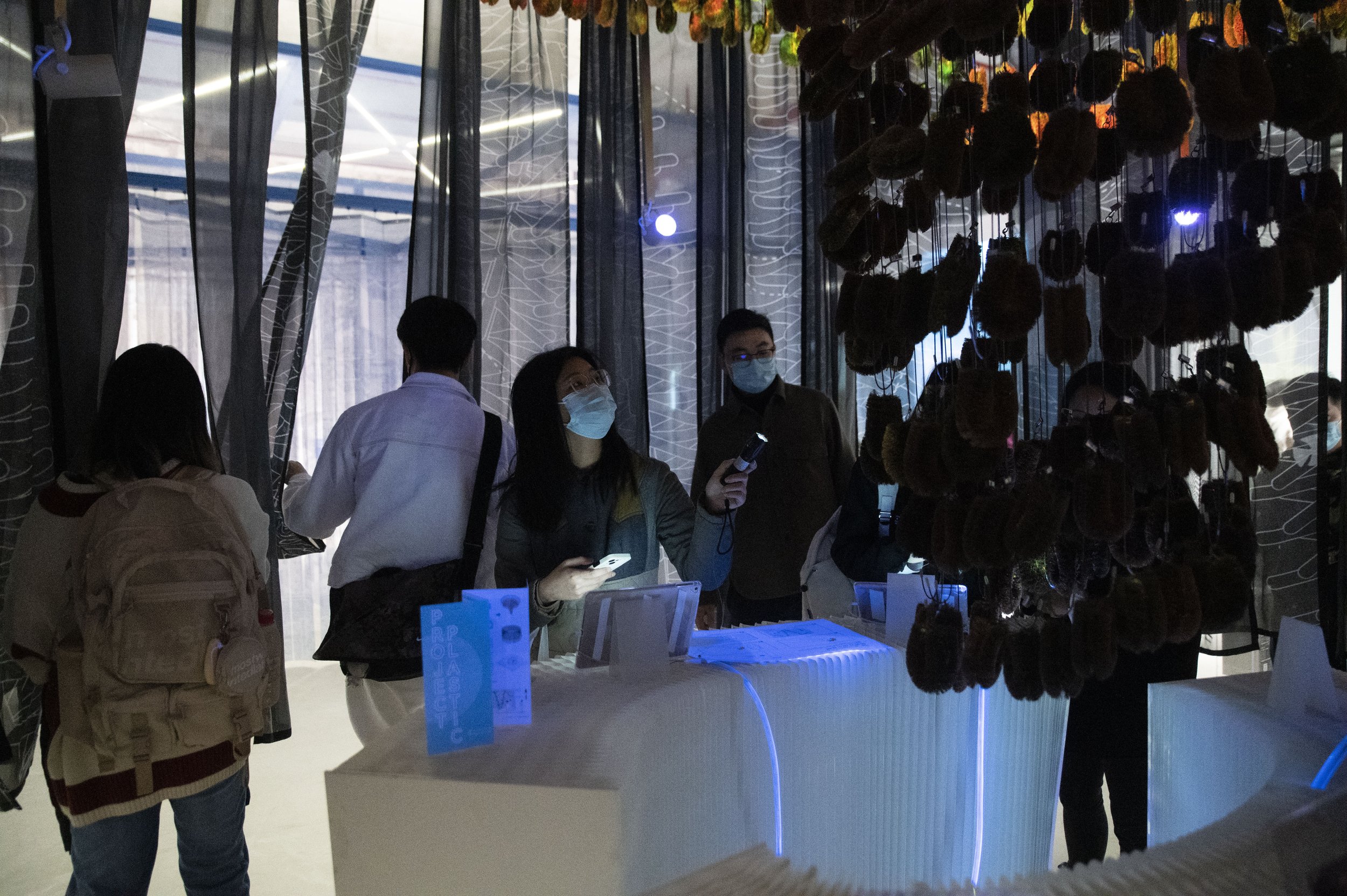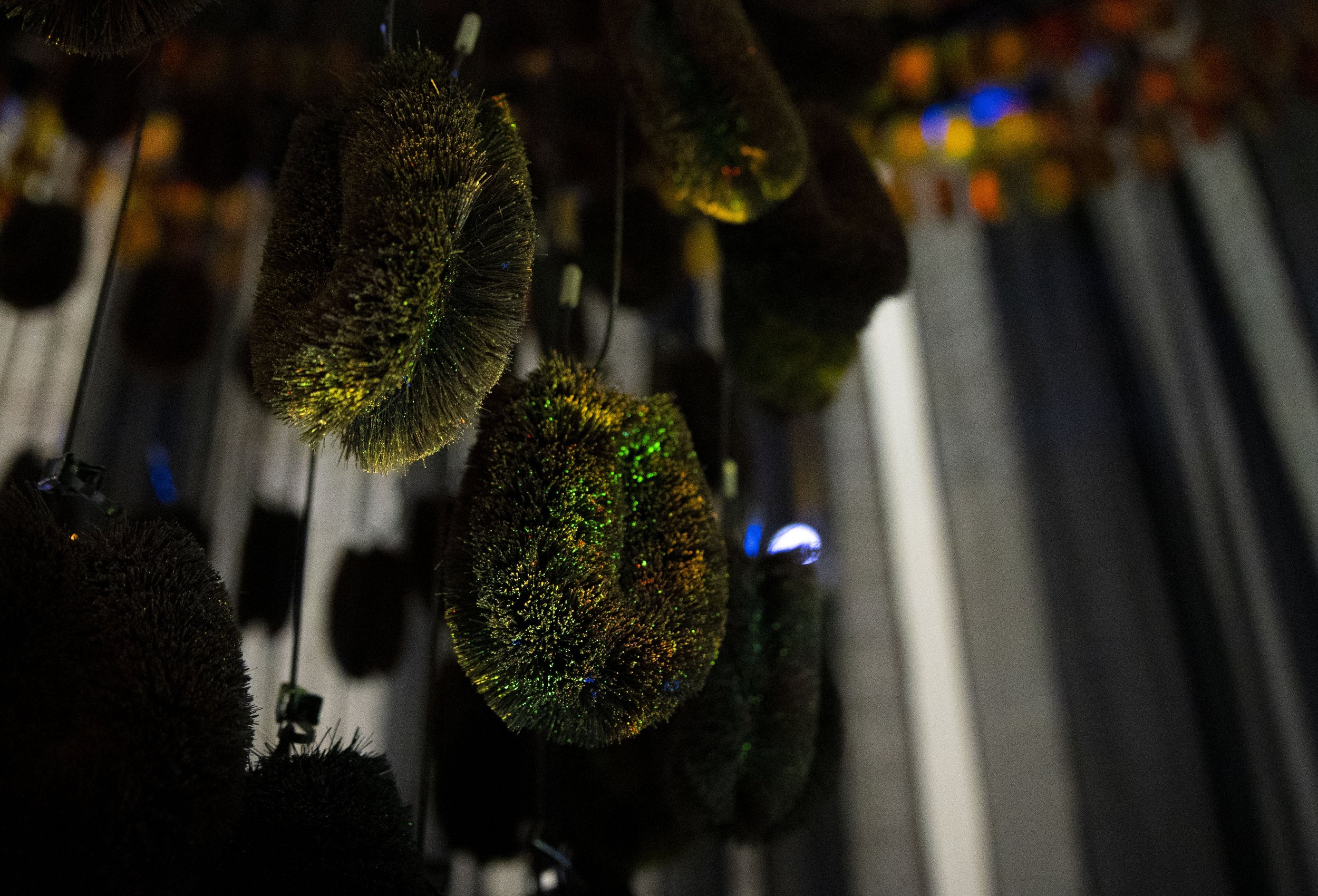PolyGone debuts at the Shenzhen/HongKong Bi-city Biennale (12/12/2022)
PolyGone’s large-scale exhibition at the Shenzhen Biennale
(Photo credit: Yidian Liu, Execution Designer: Andrew Chou and Tao Huang)
After months of planning and construction, our exhibition is finally up at the Shenzhen Biennale!
PolyGone was accepted to showcase a representation of our work, ‘Tides of Plastic,” at the Shenzhen Biennale. The Hong Kong-Shenzhen Bi-City Biennale of Urbanism/Architecture is an international showcase of designers reimagining the future of urban issues. View our proposal publication here.
This installation aims to raise awareness of the widespread microplastic pollution by addressing the minute scale and the “invisible“ quality of microplastic. Our installation utilizes architecture as a didactic tool to bridge this scalar disparity, simultaneously illustrating the extreme quantities of plastics entering our waters and showcasing novel methodologies of aquatic plastic filtration and recycling.
The installation design is an architectural derivation of the patented microplastic filtration systems developed by researchers from Princeton and Tsinghua University for PolyGone. It comprises a hanging chandelier of contaminated filter media, a series of concentric curtains, and a set of exhibition plinths.
In our experiments to create a microplastic filter, PolyGone experimented with coconut fiber balls to ensnare fluorescent plastic sediments from water. As a byproduct of these experiments, used coconut fiber filters fluoresce with collected plastics under UV light. The hanging chandelier of the installation consists of these spent filters, creating a shimmering topography of microplastic contamination that is invisible to the naked eye unless exposed to UV light.
The enclosing curtain blocks natural light from entering the UV-lit interior of the installation and features graphics to explain the problem of aquatic plastic pollution, the innovative technologies being developed to address the problem, and the speculative applications of these technologies as a part of future civic infrastructure. The curtain allows access to the pavilion from all directions, encouraging visitors to directly interact and be subsumed by the installation.
Yidian presenting the exhibit in Shenzhen with 10,000+ viewers one the steam
Fluorescent effect under UV light









